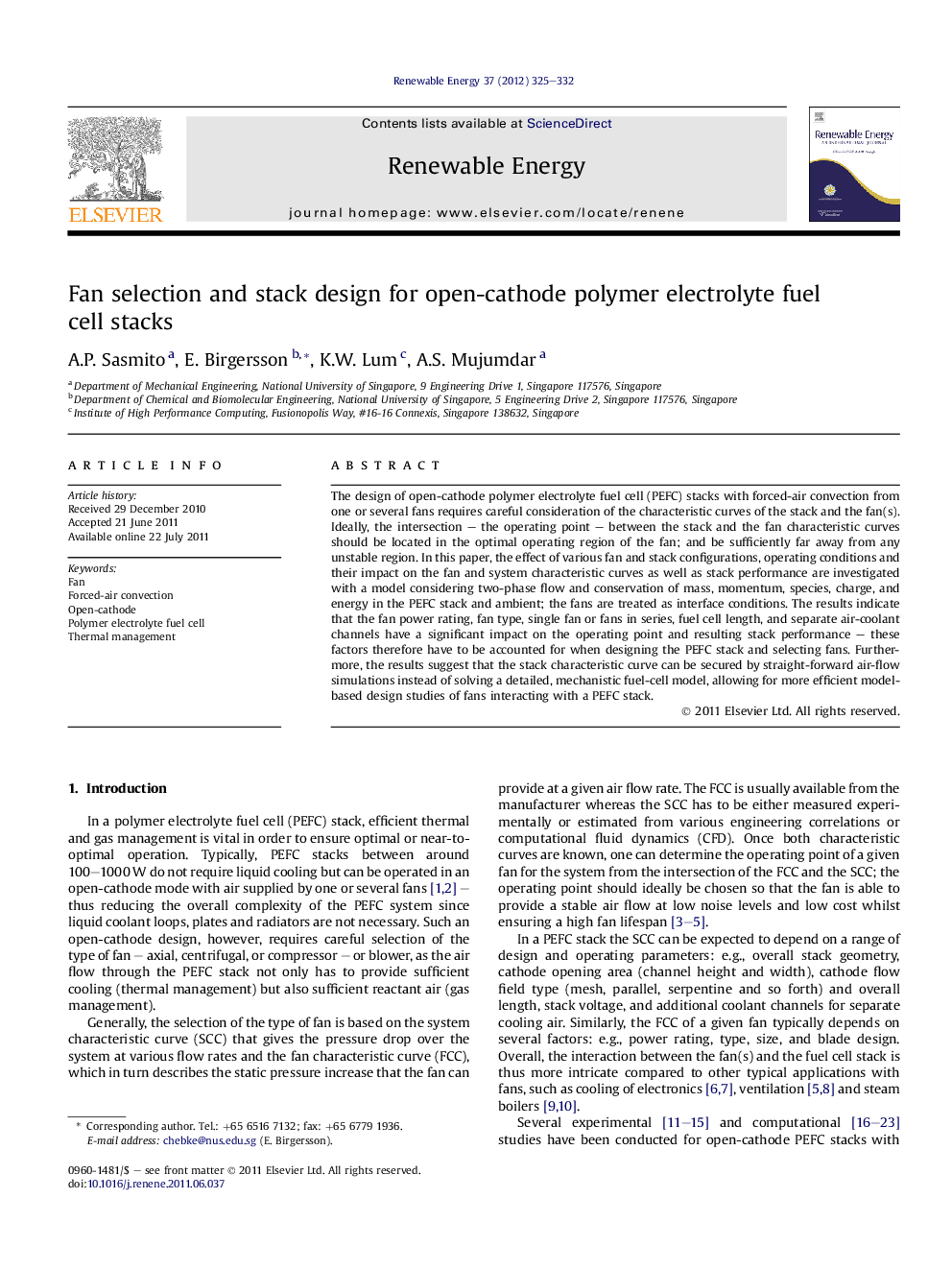| Article ID | Journal | Published Year | Pages | File Type |
|---|---|---|---|---|
| 301404 | Renewable Energy | 2012 | 8 Pages |
The design of open-cathode polymer electrolyte fuel cell (PEFC) stacks with forced-air convection from one or several fans requires careful consideration of the characteristic curves of the stack and the fan(s). Ideally, the intersection – the operating point – between the stack and the fan characteristic curves should be located in the optimal operating region of the fan; and be sufficiently far away from any unstable region. In this paper, the effect of various fan and stack configurations, operating conditions and their impact on the fan and system characteristic curves as well as stack performance are investigated with a model considering two-phase flow and conservation of mass, momentum, species, charge, and energy in the PEFC stack and ambient; the fans are treated as interface conditions. The results indicate that the fan power rating, fan type, single fan or fans in series, fuel cell length, and separate air-coolant channels have a significant impact on the operating point and resulting stack performance – these factors therefore have to be accounted for when designing the PEFC stack and selecting fans. Furthermore, the results suggest that the stack characteristic curve can be secured by straight-forward air-flow simulations instead of solving a detailed, mechanistic fuel-cell model, allowing for more efficient model-based design studies of fans interacting with a PEFC stack.
► Selection of fan power rating, series placement and type of fan are essential for PEFC stack. ► Channel length and separate coolant plates affect system characteristic curve (SCC). ► Lower operating voltage gives rise to slightly higher pressure drop over the stack. ► Straight-forward air-flow simulation is sufficient to predict SCC of fuel cell stack.
